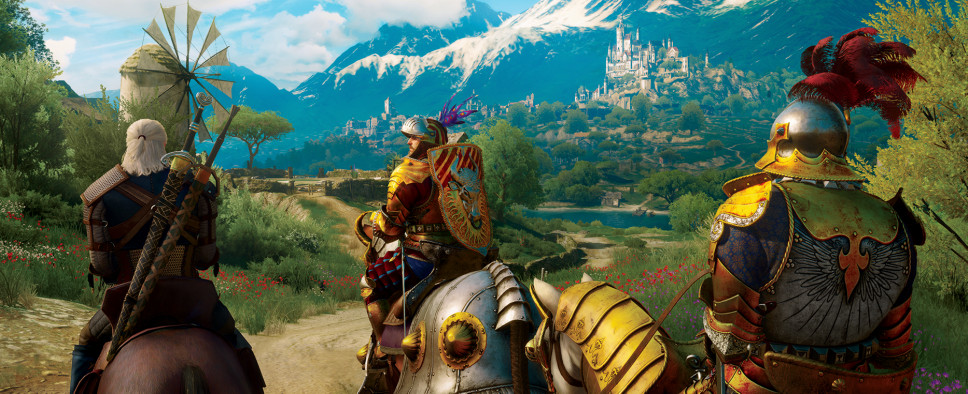The World Building of The Witcher 3: Wild Hunt
-
Category: News ArchiveHits: 2108

Website 80 level has published a retrospective look at the world building process used by CD Projekt RED for The Witcher 3: Wild Hunt and the Blood and Wine expansion, penned by senior environment artist Michał Janiszewski. While some of it covers principles and processes that aren't of particular interest for the layman, I think at least skimming through it will be rewarding for any fan of the title, as it highlights the overall philosophy behind the title's art and environments.
An excerpt:
World Building
The world in The Witcher 3: Wild Hunt is story driven, meaning we use the story as a base to determine the basic dimension and tone of each area. We use it to establish Points of Interest on the map that will guide players across the huge open world and be exciting to see. Along with concepts it serves as a blueprint to map out cities, villages, caves, using grey boxes first, and later replacing them with proper meshes, decorations, paths and foliage. And, as writers continue to work on the story, the world changes with it, and we have to be ready adapt to the new vision. In most cases these iterations help to improve the overall quality of the project and it’s very important not to get too attached to your work at this stage. We had a case where a mountain was obstructing the visibility of an important quest location, so we had to remove the mountain and replaced it with a lake and a small village on the shore instead. As we get closer to having a final vision for the world, we start creating “beautiful corners” – areas like parts of the street, walls, or sewers that are supposed to come out as close to the final thing as possible. Using sets of decorations from meshes like groups of barrels helps speed up the process and get project leads involved quicker to weigh in on the quality and decide how to continue. When the story, quests, gameplay and world are finished, we start polishing the areas, making big open spaces between Points of Interest feel interesting and natural, and helping the cinematics team make the game’s cutscenes look more epic. Lastly, there’s optimization, which can be tricky and sometimes difficult. Creating mesh proxies, balancing the Level of Detail, or curving the street a little to change how many objects are visible on screen at the same time can go a long way to make a location run smoother or allow us to make an area more crowded. And everything we do at this point brings us a step closer to that light in the tunnel that not so long ago was still so far away – finally releasing the game.
References
The world of The Witcher 3: Wild Hunt is based in Slavic, Celtic and Scandinavian cultures so that was the basic idea driving the creative process for us. We get a lot of concepts from our art team to familiarize ourselves with areas we will be working on, but we do a lot of additional research ourselves: internet, books, photos, old paintings. In Poland, we have a lot of outdoor museums that are entire medieval villages, so we naturally ended up visiting them, armed with cameras. And when gathering reference material we enter this mindset to actually start taking the camera with us wherever we go to grab everything that might be useful – mountains, small rivers, even interesting rock formations. Even listening to music can help you better figure out the mood of the area you’re working on. What you end up with is basically this huge folder, separate for each location, with tons of reference pictures and documents, and step by step you and the team have to figure out what works and what doesn’t.

